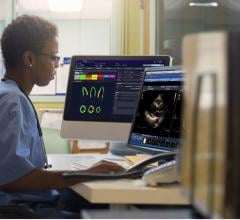
Sligo University Hospital (SUH) in Ireland uses Change Healthcare's McKesson Cardiology CVIS solution to improve efficiency.
Balancing high quality care with efficiency — and avoiding unnecessary procedures — is a priority for any hospital department given the continuing need to manage increasing demand for services with budgetary pressure. Providing high-quality healthcare to the people of Sligo, Leitrim, South Donegal and West Cavan, Ireland, Sligo University Hospital (SUH) delivers acute inpatient, outpatient and day services as well as regional specialty services in ophthalmology and ear, nose and throat services. For SUH’s cardiology department, the adoption of McKesson Cardiology cardiovascular information system in 2013 provided an opportunity to streamline processes and improve workflow.
Replacing a manual, paper-based process, echo orders are automatically received into McKesson Cardiology from Ireland’s National Integrated Medical Imaging System (NIMIS), and then fed directly through to the echocardiogram machines. All the echo images and measurements are then stored within the cardiology database, enabling the cardiac physiologists to undertake reports on the system.
As Anita Flynn, senior cardiac physiologist, explained, “The process not only streamlined echo referrals but also provided doctors with access to the electronic reports at the touch of a button. For doctors previously used to time-consuming creation of paper orders and storing printed reports within patient charts, the entire process became far more efficient and effective.”
The cardiology department’s accreditation has been supported by the use of McKesson Cardiology from Change Healthcare, leveraging the system’s good digital storage system and strong reporting, plus embedded British Society of Echocardiography (BSE) range checks, to transform the pathway from echo order through to report. Using the cardiology solution’s electronic vetting, the team has been able to triage echos, reducing the number by 8.9 percent in 2016 as a result of eliminating inappropriate requests and ensuring 80 percent of requests from the acute ward are carried out on the same day as ordered.
Achieving BSE Accreditation
With the upgrade to their cardiology solution in 2015, SUH took a step further, leveraging the improved reporting and embedded BSE range measurements to support its bid for BSE accreditation to demonstrate the quality of services being delivered. As Anthony Ryan, chief 2 cardiac physiologist, SUH, said, “BSE departmental accreditation is a recognized benchmark of quality. It indicates to patients, resource allocators and health professionals that an echo department meets quality standards.”
The department has leveraged the new software to achieve improvements at every step of the pathway — from initial echo orders through to reporting. A key aspect of the new workflow is the use of electronic vetting, which has enabled SUH to triage echo requests to both ensure urgent cases are prioritized and minimize unnecessary activity.
Using secure login, cardiac doctors and advanced nurse practitioners can order echos via NIMIS, which are actively graded by the echo team. “If we don’t feel the doctor has included enough relevant information we send the order back with a request for more clinical information,” Flynn confirmed. “They have ten working days to provide that information — at which point we will either approve the request or deny it because it is not compliant with BSE guidelines.”
As a result of this vetting process, SUH reduced its echo workload by 8.9 percent in 2016 by weeding out inappropriate requests. At the same time, the triage process has ensured the hospital’s Acute Assessment patients are prioritized — with 80 percent of echo requests received from the acute ward undertaken on the same day as ordered.
Efficient Response
One of the most important additions to the cardiology solution was the inclusion of the BSE range checking, making redundant the cardiac physiologists’ previous use of wall charts or phone apps to verify measurement range. As Ryan explained, “When we perform an echo measurement we will double-check the appropriate range and make a comment — embracing the BSE minimum dataset and quantitative measurements was a huge step forward. The system flags up any measurements outside the BSE range, which helps us to highlight abnormalities.”
The system also helps with reporting, with pre-defined sentences built in. Flynn added, “Rather than typing out entire sentences regarding a particular echo pathology, using the drop-down boxes we can very quickly and efficiently create the report — with no spelling mistakes!” In addition, built-in teaching files help trainee echo staff to gain confidence on the system quickly.
The cardiac physiologist team also has access to the reporting database from all its PCs, freeing up more machines for echo reporting, which ensures there are no backlogs. Flynn confirmed, “We didn’t want any reports outstanding for more than two or three days.
“Utilizing the integration between our cardiology solution and Cognos we have been able to identify any problems in turnaround times — flagging individuals who were not reporting within 24 hours for inpatient, urgent and routine reports, in line with BSE targets,” he said.
In addition, the cardiology solution has customized its reporting to meet SUH’s specific requirements, in line with the BSE standard and delivering the full audit trail. For example, staff can gain quick access to their BSE log book if required, plus echo reports can be indexed to enable the cardiology team to track trends in echo activity, including patient demographics, using the cardiology solution and IBM Cognos software.
Understanding patient demographics with changing demographics, plus the rise in chronic illness and obesity affecting every aspect of patient care, it has become essential to understand patient trends. Approximately 10,000 people die each year from cardiovascular disease (CVD), including coronary heart disease, stroke and other circulatory diseases. CVD is the most common cause of death in Ireland, accounting for 36 percent of all deaths, according to the HSE. Twenty-two percent of premature deaths (under age 65) are from CVD. SUH, however, operates in the North West of Ireland, an area with a higher than average elderly population.
Within the cardiology solution, SUH is able to record a depth of patient information, including not only age but also body surface area, height and weight. The results are indexed, thus providing more accurate quantitative measurements about BMI, patient mobility and age demographics.
Again, gaining maximum value from the integration of Cognos Statistical Resource to the cardiology solution, the team is able to demonstrate the number of geriatric and pediatric cardiac echos undertaken on both a monthly and yearly basis — revealing that over 52 percent of patients were aged 65 or over and 24 percent over 80 in 2016. “Providing this information to management is key to ensuring we have the right resources of both staff and equipment, such as echo couches for elderly or obese patients,” said Ryan.
Gaining Confidence
One of the unexpected side effects of attaining BSE accreditation has been a boost in confidence amongst staff. As Ryan confirmed, “Staff had the ability but achieving accreditation has given them more confidence — we are working as a team, proud and motivated.” Flynn added, “We know we are doing the job well and to the best standard we can; the best for patient care. In addition, as part of the BSE process we have echo meetings where we are all learning from one another.”
This focus on continual improvement will include encouraging more staff to undertake their individual BSE exams to further demonstrate to doctors, management and patients the high standards delivered by the echo team. Flynn concluded, “Our cardiology solution is key to providing SUH with the tools and training to support our BSE accreditation and we will continue to work with Change Healthcare and their cardiology team to make sure we are up-to-date with current standards and any new guidelines that come in to maintain the high standards we have achieved.”
For more information: www.changehealthcare.com


 May 15, 2024
May 15, 2024 








